No mow May is a good time for Wisconsin homeowners to consider groundcover plants
“No Mow May,” a movement that encourages homeowners to let their grass grow in May to create habitat and forage for early season pollinators and to help the environment, is right around the corner.
It’s a great way to get into the gardening season.
Sam Carlson, a landscape architect at Bret Achtenhagen Seasonal Services, a landscaping firm in Mukwonago, calls it “a wonderful movement."
“It started in the UK, and then Appleton was the first city in the U.S. to jump on that bandwagon. In terms of a movement or an awareness, I love that attention has been drawn to pollinators,” she said.
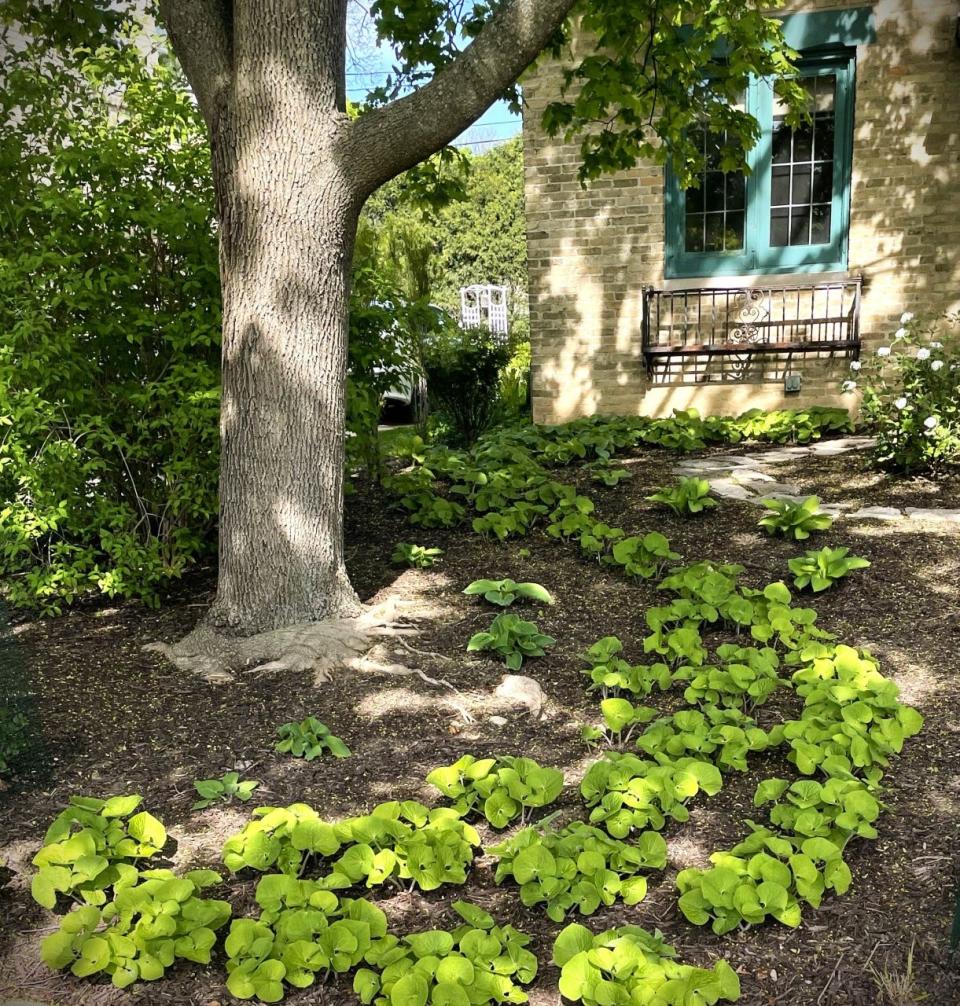
Dick Zondag, past president of Jung Seed Company, a seed catalog company with its main office in Randolph, said he likes the initiative because it “gives pollinators a chance to come out of their hibernation and to get a good start.” The firm also has seven garden centers in Wisconsin.
In a five part series on the impact of grass published in 2019 by the Audubon Society, Janet Marinelli writes: “Not surprisingly, the endless mowing, blowing, fertilizing, and irrigation involved in turf maintenance results in a hefty climate footprint.
“To make matters worse, the country’s 40 million acres of lawn, our largest irrigated crop, offer little to birds and other wildlife. Replacing your lawn with native trees, shrubs, and groundcovers not only can slash your landscape’s greenhouse gas emissions but also coax birds back to your garden and look great, too.
“A good way to begin chipping away at your lawn is to enlarge existing planting beds, replacing another patch of turf each year.”
More: What types of groundcovers would you use for a shade garden or a full lawn?
More: Here's how to register for No Mow May in Milwaukee
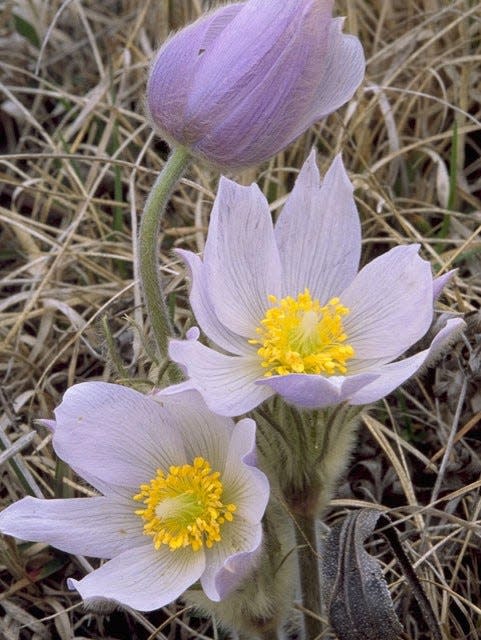
Groundcover plants add interest to lawns and require less maintenance
For those interested in replacing grass with flowers, herbaceous groundcovers are a good option, garden professionals say.
They can fill in areas under trees and bushes, edge walkways, meander between steppingstones, and add interest to flowerbeds when their colors and textures flow together.
Unlike grass, they don’t have to be mowed and watered weekly, and they don’t need to be aerated, reseeded, or beaten back with a string trimmer.
Their biggest asset might be that they attract pollinators and create habitat for them.
What exactly are herbaceous groundcovers?
They are perennials, but what separates them from others in this class is their short stature – typically from 2 to 12-inches high – and their ability to rapidly spread in the same way lawn grass does with a creeping root system, said Kristyn Greenfield, owner of Bloom Landscaping in Wauwatosa.
“Some of their benefits are they have few pest and disease problems, so they don’t require pesticides, and because of their low-growing characteristics less weeding and mulching is needed. Some can even take light foot traffic,” she said.
“They are also a great choice on sloped areas where grass often doesn’t do well; it’s a great way to minimize the hassle of mowing on a slope,” she said.
They are also generally the least expensive plants to buy, as they are most commonly sold in 3 and 4½-inch pots, she added.
Zondag agreed they are a good value, but said the initial expense can be high.
“If you have a large area you have to cover, even if you put the plants 18 inches apart, you are still going to be spending a significant amount of money.
“It’s going to take a couple of years to get that space established, and you will have to weed or mulch around them until they are established. But once they are established, the weeds won’t come up. Once they are established, they are very low maintenance, and groundcovers still costs less than maintaining grass,” he said.
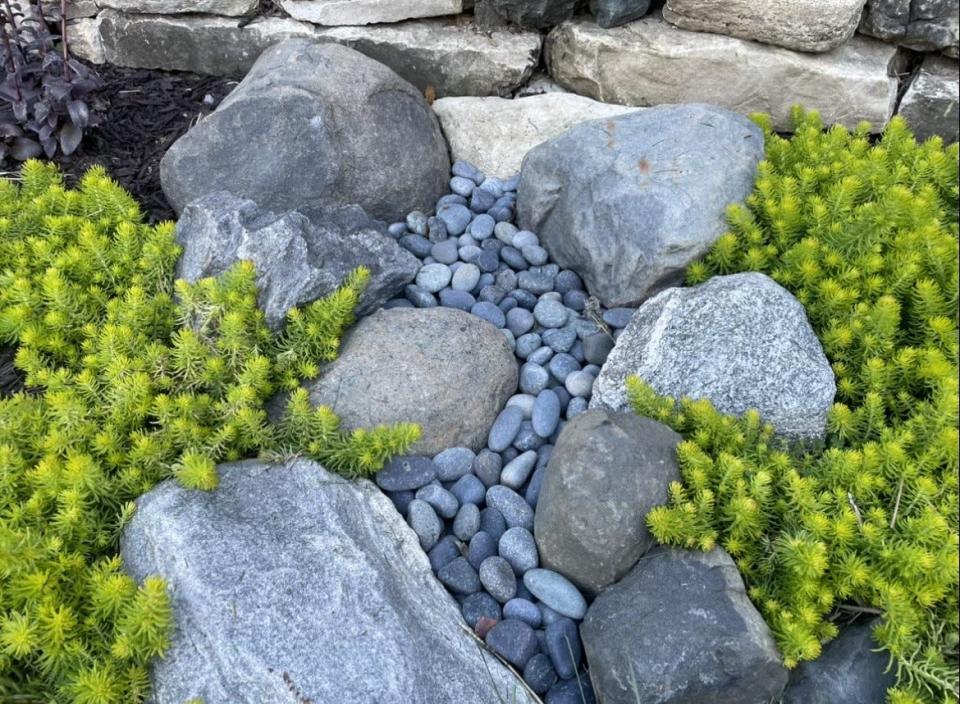
They’re also beautiful and can be used in a variety of ways.
“Your sedums and creeping phlox look really beautiful in spring when they are flowering, and in summertime they can take over an area with a 6 to 8 inch mound of foliage,” he said.
“All groundcovers bloom and offer beautiful flowers that support pollinators.” They are also more interesting than lawns when maintained, Greenfield said.
“I design for many homeowners who want more beautiful gardens rather than lawns and who want to support pollinators. We’ll use lawn as pathways for high foot traffic areas and dog runs, but also as a resting spot for the eye.
“When transforming a property from mostly lawn to predominantly planting beds, using various flowers and/or shrubs increases the mulching maintenance needs. A great way to limit mulch in these new areas is through the use of groundcovers.”
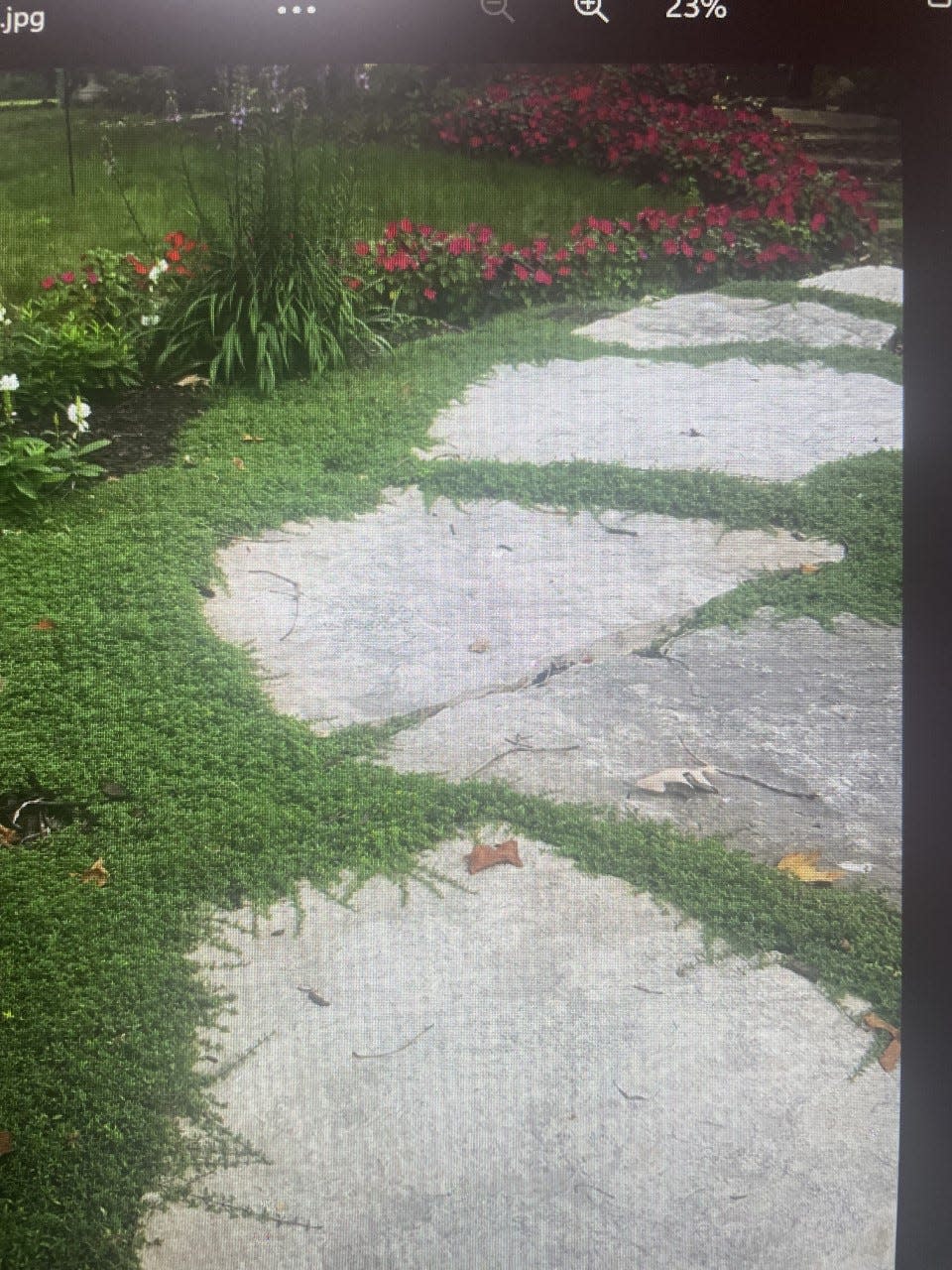
More: 23 great, mostly new plants for Wisconsin in 2023
More: A guide to Milwaukee area farmers markets open in 2023
Diverse landscapes provide flowers and color through the growing season
Greenfield said while groundcovers are low maintenance, they aren’t no maintenance.
“Groundcovers need occasional weeding, and they should be edged or pulled back from lawns and other plantings one or two times a year to keep them in check.”
There are even a few negatives to groundcovers.
Carlson said they are sometimes hard to find, so gardeners have to seek them out at specialty nurseries.
Some can even take over, she said.
“Some groundcovers are aggressive and become a monoculture. … But I would rather see something green than stone or nothing that’s living.”
She added that while groundcovers are a better choice than turf, it's important to plant a variety of perennials.
“You want to create diversity in a landscapes. You don’t want a monoculture. You want blooms throughout the growing season so the pollinators can forge on those flowers. That will invite pollinators and insects into your garden and provide them habitat,” she said.
Information about Milwaukee-area communities participating in No Mow May can be found at the Midwest Grows Green website, midwestgrowsgreen.org/no-mow-may-milwaukee/
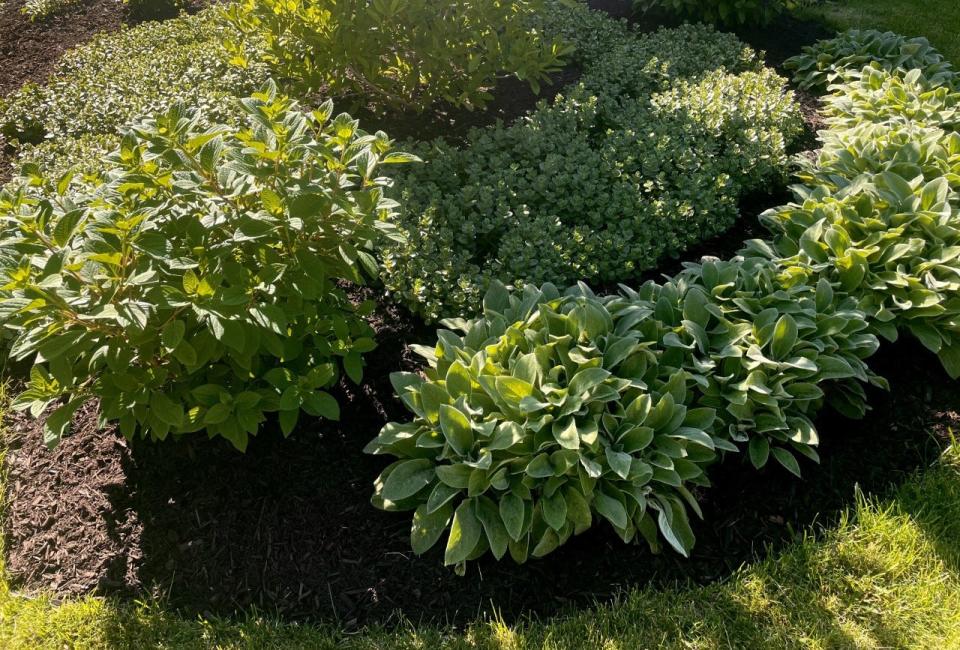
More: 2023 Milwaukee area plant sales begin with pre-orders, and focus on native perennials
More resources on groundcovers
PlantNative: Groundcover plants most suitable to Wisconsin Climates: plantnative.org/ground-cover-plants-most-suitable-to-wisconsin-climate.htm
Wisconsin Pollinators: Pollinator friendly native groundcovers. wisconsinpollinators.com/Garden/G_GroundCovers.aspx.
Midwest Living: 15 easy Midwest groundcovers: midwestliving.com/garden/ideas/15-easy-midwest-groundcovers/
Melinda Myers: Groundcovers for a shady slope. melindamyers.com/articles/groundcovers-for-a-shady-slope
Books:
"Groundcover Revolution: How To Use Sustainable, Low-Maintenance, Low-Water Groundcovers To Replace Your Turf." By Kathy Jentz (Cool Springs Press, 2023).
"Covering Ground: Unexpected Ideas for Landscaping with Colorful, Low-Maintenance Ground Covers." By Barbara W. Ellis (Storey Publishing, 2007).
This article originally appeared on Milwaukee Journal Sentinel: No mow May is a good time to consider groundcover plants

